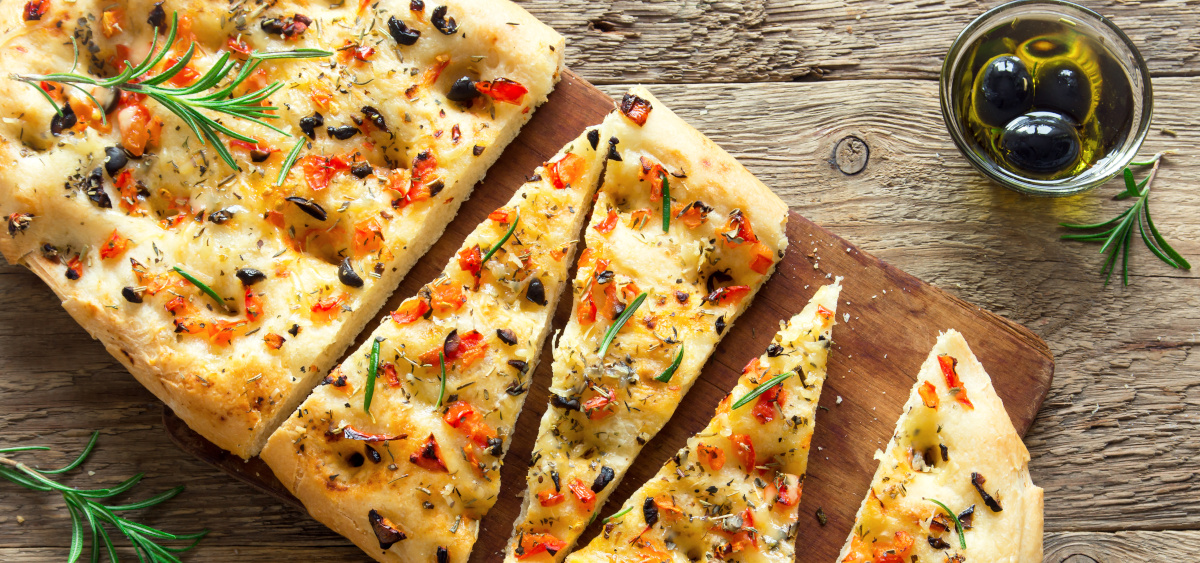Is a hamburger a sandwich? How about a hot dog? Courts must rule on a vast range of subjects — sometimes even on the legal definition of what we’re eating! As far as we know, no court has solved the hamburger/hotdog/sandwich puzzle. However, a Quebec court did have to rule on whether a focaccia is a pizza. Let’s look at how this came about and what the court decided.

The background
Our story begins in 2015 in a downtown Montreal food court. One restaurant, a franchise of a large chain, had been there for many years and had a long-term lease with a clause granting it the exclusive right to sell pizzas and hot submarine sandwiches in that food court.
However, in 2015 a new restaurant began to set up shop. Their menu included pizzas, hot submarine sandwiches, and focaccia with different toppings. The first restaurant claimed that its exclusivity clause was being violated. The new restaurant agreed to drop pizzas and submarines from its menu but insisted that a focaccia was not a pizza. The first restaurant disagreed and took the case to court. It also asked the court to issue a safeguard order while awaiting a final judgment on the matter.
What is a safeguard order?It’s a temporary judgment for matters that are too urgent to await a final judgment. Generally, it lasts three or six months but can be renewed to last longer. |
What the court decided
The court first defined a pizza as made up of bread covered with various toppings, primarily tomato sauce and cheese. It defined focaccia — on its own — as simply a bread.
The court then stated that, when a focaccia is covered with various toppings, it has all the attributes of a pizza. Indeed, the online menu of the new restaurant showed focaccia under the heading “PIZZA”. So, the first restaurant won on that point: the court ruled that a focaccia (with toppings) is a pizza.
However, when deciding whether to issue a safeguard order, a court must also consider whether the party requesting the order would suffer serious harm if the order were not granted. The court found that the first restaurant would suffer a serious loss of income if the new restaurant continued selling focaccia with toppings. Conclusion: The court ordered the new restaurant to cease selling focaccia with toppings.
The end of the story?This legal dispute could have continued until a final judgment, which could have taken some time, and which might have confirmed the temporary judgment or arrived at a different conclusion. However, our research shows that no further judgment was issued in this case, which leads us to believe the new restaurant accepted the court’s culinary interpretation in the temporary judgment. |
A rare case?
Our research shows that there are few court decisions defining culinary terms or foods. When such matters go to court, it usually concerns an exclusivity clause, as in the case discussed above. Even then, it’s rare for a court to have to define a type of food. The cases usually compare restaurants based on factors such as the kind of establishment and clientele. Sometimes, definitions regarding food can come up in cases regarding the suspension of a liquor license.
The fact that we had to go back to 2015 to find a case defining a type of food gives an idea of how rare they are!





